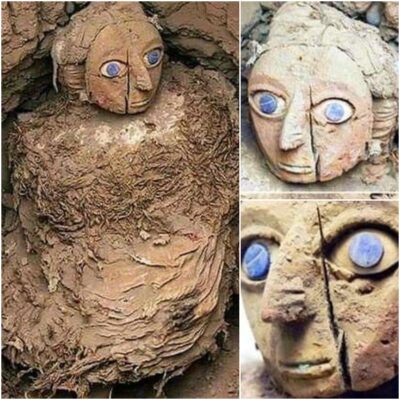On April 26, 1952, a group of Danish peat cutters discovered The Grauballe Man in the Nebelgard Fen bog close to Grauballe.

The locals initially believed it to be the body of Red Christian, another peat cutter who was notorious for his drinking. Red vanished in 1887, and it is thought that she fell into a marsh and drowned.

Longest-lasting missing person The Grauballe Man
It was not an unusual end for the storey behind two bodies retrieved from English bogs in Cheshire. However, the villagers believed they should be certain, so they contacted Ulrik Balsev, a nearby amateur archaeologist, as well as the local physician. A short inspection revealed that the man was naked and sporting a horrible scowl.
The locals contacted experts at the Aarhus Museum of Prehistory after failing to identify the individual or ascertain what caused death. The following morning, Professor Peter Glob visited and supervised a group of peat cutters as they removed a sizable block of peat holding the remains.

When they arrived at the museum, Glob’s crew thoroughly examined the man. He was thought to have been about 30 years old when the incident occurred. He would have stood at 1.75 meters (5 feet, 7 inches) tall.
The hair still clinging to his head was about 2 inches (5cm) long, however, despite its red appearance, the man was probably not a red head in life (the color was most likely the result of being submerged in the bog).
The man had stubble on his chin and his hands and fingers showed no signs of manual labor.
To everyone’s amazement, more scientific investigations, including radiocarbon dating, showed that the Grauballe man had lived in the late Iron Age, most likely between 310 BC and 55 BC.
The man’s comparatively smooth fingerprints suggested that his hands were unaccustomed to physical labor, and an electron microscope scan of the corpse corroborated this.

His stomach contained seeds from more than 60 different herbs and grasses, according to an analysis of what was inside of him. His final meal was maize porridge.
The fact that the herbs and berries in his stomach were not fresh allowed the experts to conclude that the man may have eaten them in the winter or early spring. His stomach showed traces of poisonous fungi called fungi ergot.
The forensic study that showed the injuries to the body, particularly the throat being slit from ear to ear, was the most startling of all. The individual had four lumbar vertebrae missing, according to the report.
His skull was fractured and his right tibia was broken, leading researchers to believe that he had been beaten up at first. However, it was later discovered that these injuries occurred after the Grauballe man had died, possibly as a result of pressure from the bog or by the locals who discovered him.
There are numerous hypotheses as to what led to the Grauballe man’s death. Neither any objects nor any apparel were discovered with. The possibility exists that the man was wearing clothes at the time of this event, but they eventually disintegrated in the swampy bog.
Two prominent theories have emerged, both of which rely on present knowledge of life in northern Europe in the 3rd century B.C.
According to the first theory, the individual was a criminal who lost his life as a result of his misdeeds. The ancient Roman historian Tacitus claimed that the northern tribes were extremely rigorous and frequently executed those who broke the law.
This theory—that he never worked an honest day in his life—could be supported by the silky hands. Another argument that the Grauballe guy was a prisoner of war is that the northern tribes frequently participated in conflict among themselves (such men were also routinely killed).
But why was this man in the muck rather than being executed among the other criminals? There may be a solution to this in the second popular theory. The Grauballe guy was allegedly sacrificed, according to some analysts.
He never worked a day in his life, thus he has smooth hands since he was always meant for holy causes. Tacitus also spoke of the strong bonds that northern Europeans had with the soil, saying that “during spring she visits these tribes and upon departing, a selection of people are sacrificed” (Nicholson Museum).
Another notion based on the ergot fungus discovered in his stomach fits with the idea of a holy man destined to be sacrificed to mother earth. Ergot is probably best known as the fungus from which LSD was first synthesized from.

The ancient Greeks also ate this fungus as part of their Eleusinian Mystery ceremonies, and it’s possible that the initial Salem Witch Trial accusers did as well (accidentally).
Ergot makes people convulse and have hallucinations. A burning sensation in the lips, hands, and feet, as well as excruciating stomach cramps, are other symptoms. After the monastery hospital where the sickness was first started to be treated in 1095, the symptoms are collectively known as St. Anthony’s Fire.
The Grauballe man would have been too ill to work, but it’s possible that a holy order utilized him to make prophecies akin to those of the Oracle of Delphi, bolstering the idea that the Grauballe man was a holy man. He would have been reverently dumped in the bog after that.
According to a related hypothesis, ergotism caused by ergot eating would have made him a pariah in the community, someone who only brought about bad luck and suffering.
In such a case, the victim would have to be ᛕᎥᒪᒪed in order to save the village from his (or her) evil influence. He then would have been deposited in the bog to keep him far away from the village.











